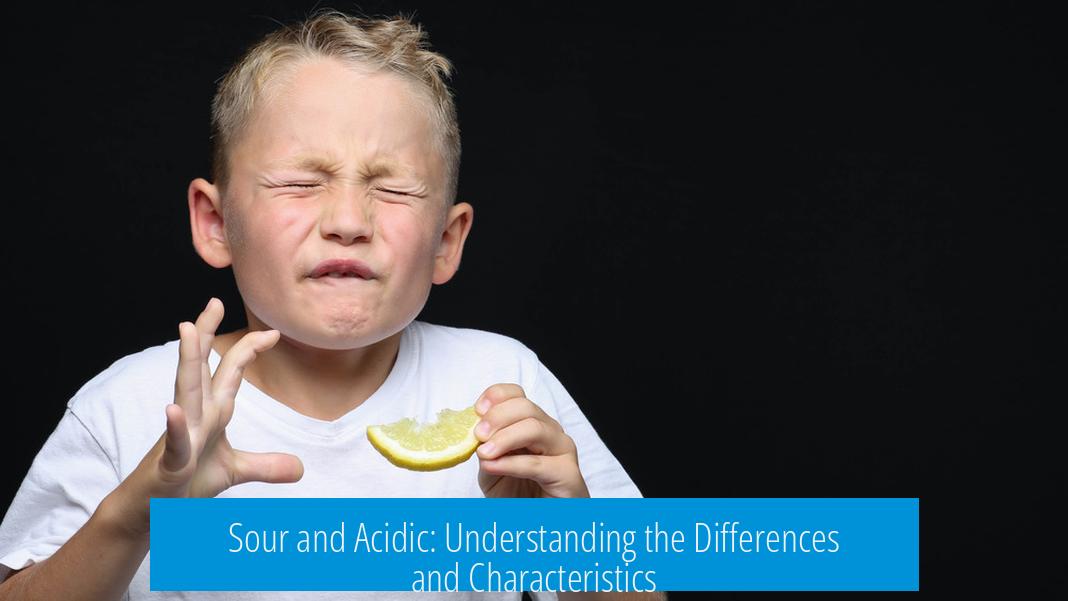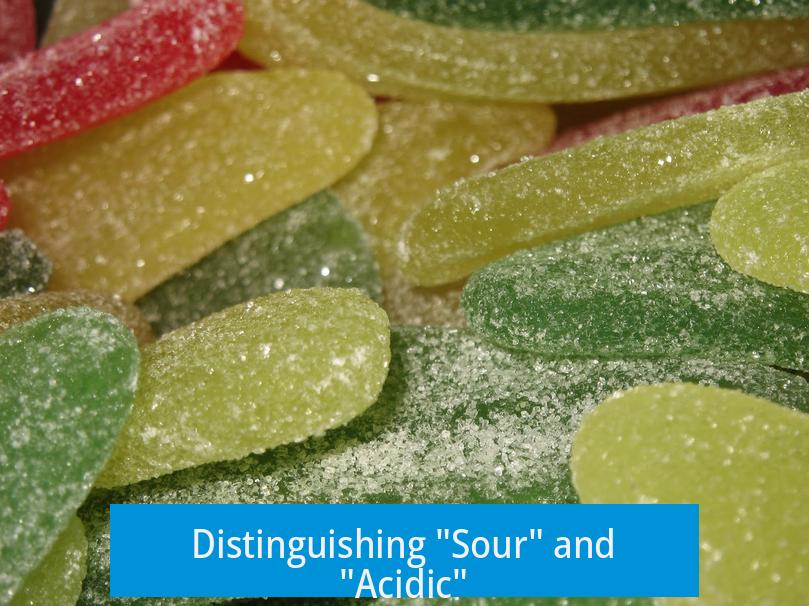Sour and Acidic: Understanding the Differences and Characteristics

All acids taste sour, but the experience varies with the type of acid and its concentration. Hydrochloric acid (HCl), for example, tastes distinctly sour and is a key component of stomach acid, which many recognize from the sharp taste associated with vomit. However, some acids should never be tasted due to their toxicity.
Taste Characteristics of Acids
Acidity is directly linked to sourness in taste. Acids release protons (H+ ions) when dissolved in water, which stimulate specific receptors on the tongue that signal sourness to the brain. This mechanism explains why all acids are perceived as sour, though the intensity and flavor nuances vary.
- Hydrochloric acid (HCl): Tastes distinctly sour with a strong sharpness, similar to the sensation of stomach acid.
- Organic acids: Citric acid in lemons and acetic acid in vinegar both taste sour but have different flavor profiles because their conjugate bases impart unique odors and tastes.
Distinguishing “Sour” and “Acidic”

The terms “sour” and “acidic” describe related but distinct concepts.
- Linguistic origins: The word “sour” comes from Old Germanic roots, while “acidic” has Latin and French origins.
- Usage nuances: In UK English, “acidic” often describes a mild or scientific measurement of taste (e.g., lemon juice), whereas “sour” refers to a more intense experience (e.g., biting into a raw lemon or spoiled milk).
- General theory: “Sour” tends to be used when referring to the taste of food, but “acidic” is more common in chemical or pH contexts.
Physiology of Sour Taste Perception
The sensation of sourness arises when acids donate protons. These protons interact with proton-sensitive receptors on taste cells.
- Proton receptor mechanism: This receptor detects the presence of free hydrogen ions (H+) and sends electrical signals to the brain perceived as sour taste.
- Difference from bitter taste: Bitter taste involves recognition of hydroxide ions or other molecules, showing that sour and bitter tastes are mediated by different receptors.
- Acids donate protons, not electrons: This distinction is key in chemistry and taste perception.
Alkaline Taste and Its Contrast to Sourness
Basic or alkaline compounds produce a different taste sensation, often described as bitter or soap-like.
| Taste Type | Associated Compounds | Description |
|---|---|---|
| Sour | Acids (e.g., citric acid, acetic acid) | Shrill, tart taste caused by proton donation |
| Bitter/Alkaline | Bases (e.g., lye, some soaps) | Soap-like or bitter taste; can be harmful in small amounts |
Basic substances are not common in everyday flavors due to physiological constraints and potential toxicity.
Cultural and Practical Notes on Sourness
Acidity and sour taste carry cultural significance beyond chemistry and physiology.
- Some cultures classify foods as “hot” or “cold” based on qualities linked to acidity rather than temperature or spiciness.
- Small controlled doses of dilute hydrochloric acid are reported to have a pleasantly sour taste.
- Common acidic foods include vinegar, lemons, and even coffee, which, despite being bitter, contains acidic compounds.
- Anecdotal reports suggest that nitric acid tastes somewhat like lemonade, though tasting strong acids is unsafe.
Summary of Key Points
- All acids taste sour due to proton donation stimulating specific taste receptors.
- “Sour” describes intense, food-related acidity; “acidic” refers more broadly to pH or mild acidity.
- Sourness results from proton receptor activation; bitterness is linked to different receptors.
- Alkaline compounds often taste bitter or soap-like and are less common in food flavors.
- Culture influences perception and categorization of sourness in foods.
What makes all acids taste sour, and is it safe to taste them?
All acids taste sour because they donate protons, which activate specific taste receptors. However, many acids can be dangerous, so tasting them is generally unsafe and not recommended.
How do “sour” and “acidic” differ in everyday English use?
“Sour” is usually used to describe strong or unpleasant acidic tastes in food, like raw lemon or spoiled milk. “Acidic” often refers to a general acidic taste or pH level without implying discomfort.
What causes the sour taste on a physiological level?
Sourness arises when acids donate protons that bind to proton receptors on your taste buds. This triggers electrical signals that the brain interprets as sour.
Why do some acidic foods taste differently even if they are sour?
The conjugate base of an acid influences its flavor and odor. That’s why citric acid and vinegar both taste sour but have distinct tastes and smells.
Can alkaline substances taste sour as well?
No, alkaline or basic substances typically taste bitter or soap-like. They do not activate sour taste receptors but instead trigger different taste sensations.
Is it safe to consume dilute hydrochloric acid for its sourness?
Very dilute hydrochloric acid can taste sour and is sometimes safe in small amounts, but it must be handled carefully and properly diluted to avoid harm.





Leave a Comment